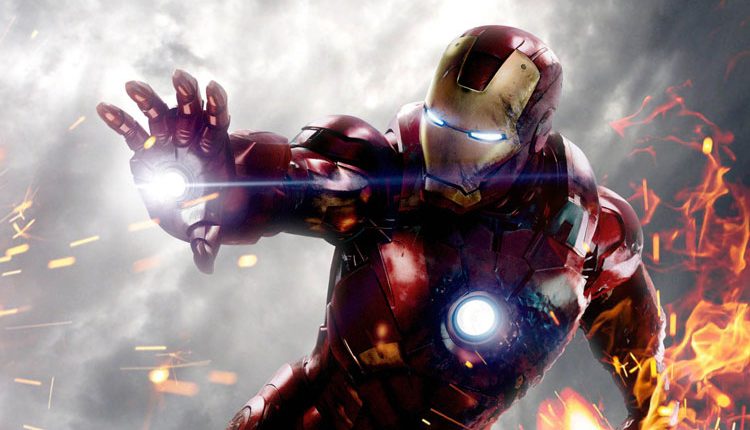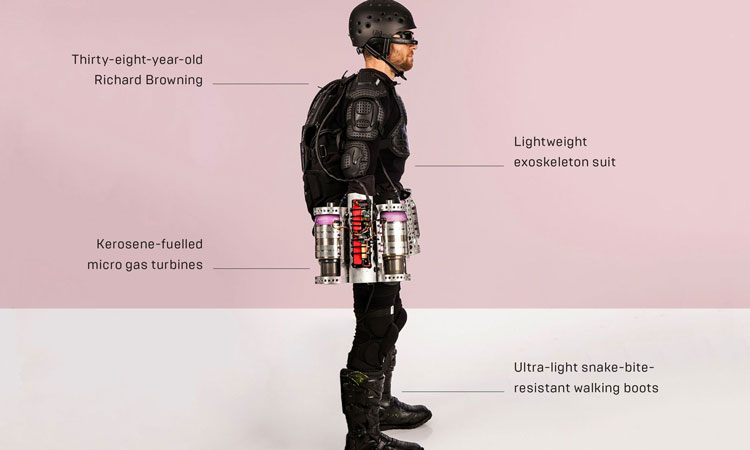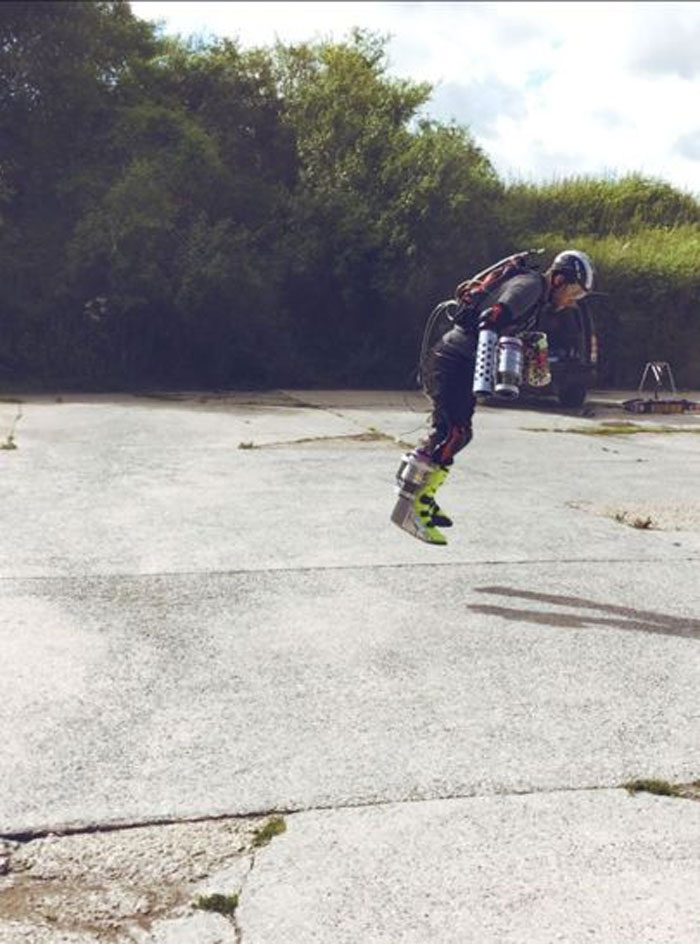One day in early summer last year, Richard Browning headed to his farmyard in the English countryside. He attached a kerosene-fueled micro gas turbine – effectively a small version of a plane engine – to each of his arms and legs.
Then he carefully pressed the throttle trigger in his right hand. For months Browning had been working on this secret project. Now the moment of truth had arrived. In the modest surroundings of the UK countryside, “Wiltshire’s Iron Man” took to the sky. Sort of.
Browning’s first lift-off was short and clumsy. For a few seconds, he hovered half a meter off the ground, landing with a skidding stop as clouds of dust blew up around him. But it was, unmistakably, flight. “That was the very first moment we properly proved this would work,” he says. “That was it. You could get away with it.”
Two and a half years ago, 38-year-old Browning decided he wanted to fly. Human-powered flight was, he knew, “a very eccentric realm.” Nonetheless, it fascinated him. He tried gliding with wings and electric fan motors, working weekends and evenings until his wife begged him to stop. Then he had an epiphany – what if he strapped a jet engine to his body and built a real-life version of Tony Stark’s iconic suit?
Nine months since his inaugural test flight and Browning’s intuition has paid off. His suit is a light exoskeleton attached to six gas turbines with a combined thrust of 130kg. His feet are covered by ultra-light snake-bite resistant walking boots imported from the US. And his flights, from a few seconds, now last as long as twelve minutes.
“We’re a long way away at the moment,” Browning tells WIRED. “But one day you’ll literally be able to walk around in your garden, take off, fly about, then come down low and land.”
To hover, Browning starts his engines before directing his movement with small, precise shifts of his body. The two turbines on his back are splayed out to provide balance; the two on each arm angle forward. Pointing down creates what Browning calls “a teepee of thrust vectors,” pushing him away from the ground. Shifting his arms back sends him forward; flaring his arms out pushes him down. If he wants more speed, he pulls his arms in and pushes his chest out.
“The way you have to balance is pretty much the same stance Tony Stark has in the film,” Browning says. “When [Stark] first builds this thing in his lab, he goes crashing around bashing into his cars. The animators who did all that in CGI obviously did some pretty big thinking. It was kind of a funny moment when we realised we should have just watched the film and done that homework.”
The suit, which Browning estimates cost around £40,000 to develop (“I’m pretty good at blagging cheap stuff”), can travel at a speed of up to 450km an hour, although Browning hasn’t tested it to anywhere near full capacity. “If I put my arms down at my side, I’ll accelerate very fast and go straight up in the air. But I wouldn’t do that because I didn’t have a parachute.”
The suit is constantly improving. The latest addition: a heads-up display, supplied by Sony. Working with a company that had created augmented reality swimming goggles, Browning has developed a holographic lens “genuinely like a heads-up display fighter system.” With this in place, he’ll be able to monitor his fuel levels; without the display he has to ask his wife or his father-in-law to squeeze the fuel tanks “and judge by their facial expression” how much petrol he has left. He’s full of plans for future enhancements: automated balancing systems; 3D-printed titanium arm mounts; flexible LCD screens “so it will go invisible at the touch of a button.”
Browning says the suit, which he calls Daedalus after the legendary Greek inventor, is stable and simple to control. “It’s just pointing the vectors in the right place. Your brain very quickly wires itself to be able to manage that.” But it is an augmentation of human ability, not a personal helicopter. Browning runs ultra-marathons and practices callisthenics, gymnastic exercises he learnt as a Royal Marine reserve. On a flying machine, every bit of weight counts and to pilot Daedelus, Browning dropped from 75 to 72kg.
Browning also cycles 120km a week, part of his commute from Wiltshire, where he lives with his wife and two sons, to his job in the City, where he works as an oil trader for BP. For him, his job and his hobby fit together neatly. “Trading’s all about thinking up crazy new things and trying to find new opportunities.” But although many traders may fancy themselves as Tony Stark, very few of them take the step of turning into Iron Man. Browning’s extra motivation comes from his family history.
Browning’s father, Michael, was an aeronautical engineer, who worked at helicopter manufacturer Westlands but who wanted to be an inventor. So he left his job to pursue his passion. Despite creating a number of useful designs – including a system for mountain bike suspension – Michael Browning was unable to make money from his inventions and, in despair, he killed himself, when Richard was just 15. “To me, that makes a lot of sense of where I’ve gone with my career and my life,” says Browning. First the cautious businessman – now, at an age when he can afford it, the maverick inventor. His father’s son.
Not that Browning has forgotten his commercial background. He’s already developing a business around his flying suit, under the name of Project Gravity. There’ll be keynote corporate speeches and innovation consultancy – he’s got space at the Olympic Park to build a “Tony Stark lab, garage thing” to do flight training for well-off individuals.
But all that is still to come. For now, Browning is still working on his suit: more flights, as often as he can manage, learning control, integrating improvements. Fulfilling an ancient dream: a fragile human body, rising slowly into the air.




Comments are closed, but trackbacks and pingbacks are open.